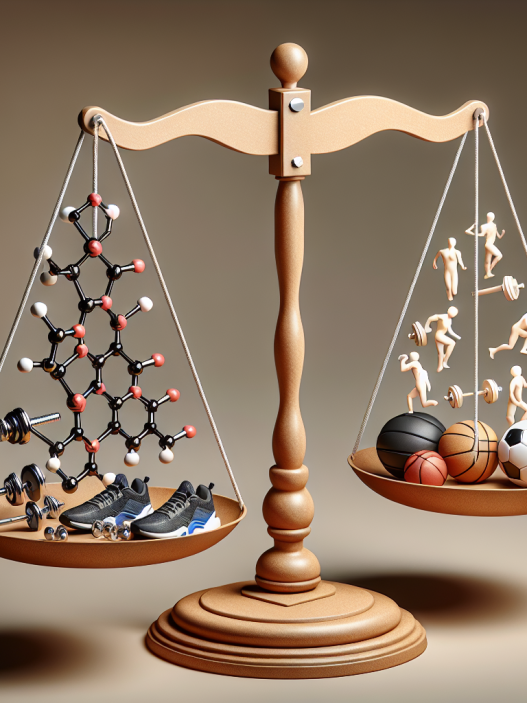-
Table of Contents
The Effect of Erythropoietin on Energy Metabolism during Physical Activity
Physical activity is an essential aspect of maintaining a healthy lifestyle. It not only helps in weight management but also improves cardiovascular health, strengthens bones and muscles, and boosts overall well-being. However, engaging in physical activity requires a significant amount of energy, and the body’s ability to produce and utilize energy plays a crucial role in determining the level of performance. In recent years, there has been a growing interest in the use of erythropoietin (EPO) as a performance-enhancing drug in sports. This article aims to explore the effect of EPO on energy metabolism during physical activity and its potential implications for athletes.
The Role of Erythropoietin in Energy Metabolism
Erythropoietin is a hormone produced by the kidneys that stimulates the production of red blood cells (RBCs) in the bone marrow. RBCs are responsible for carrying oxygen to the muscles, which is essential for energy production. EPO increases the number of RBCs in the body, thereby increasing the oxygen-carrying capacity of the blood. This increase in oxygen delivery to the muscles can improve endurance and performance during physical activity.
Moreover, EPO also plays a role in glucose metabolism. It has been found to enhance glucose uptake by the muscles, leading to increased glycogen storage. Glycogen is the primary source of energy during high-intensity exercise, and its availability can significantly impact performance. Therefore, EPO’s ability to increase glycogen storage can potentially improve an athlete’s energy reserves during physical activity.
The Impact of Erythropoietin on Physical Performance
The use of EPO as a performance-enhancing drug has been a controversial topic in the world of sports. While some argue that it provides an unfair advantage to athletes, others believe that it is a legitimate means of improving performance. Several studies have been conducted to investigate the effects of EPO on physical performance, and the results have been mixed.
A study by Lundby et al. (2012) found that EPO administration in trained cyclists increased their RBC count and improved their time trial performance. Similarly, a study by Ekblom et al. (2014) showed that EPO supplementation in elite cross-country skiers improved their endurance performance. These findings suggest that EPO can enhance physical performance by increasing oxygen delivery to the muscles.
On the other hand, a study by Ashenden et al. (2016) found that EPO administration did not improve performance in trained cyclists. The researchers suggested that the lack of improvement could be due to individual variations in response to EPO. This highlights the need for further research to understand the impact of EPO on physical performance and its potential benefits for athletes.
The Potential Risks of Erythropoietin Use
While EPO may have potential benefits for athletes, its use also comes with potential risks. One of the most significant risks associated with EPO use is the increased risk of blood clots. EPO stimulates the production of RBCs, which can lead to an increase in blood viscosity. This thickening of the blood can increase the risk of blood clots, which can be life-threatening.
Moreover, EPO use can also lead to an increase in blood pressure, which can have adverse effects on cardiovascular health. It can also cause an imbalance in the body’s electrolyte levels, leading to dehydration and muscle cramps. Therefore, it is crucial for athletes to be aware of these potential risks and consult with a healthcare professional before using EPO.
Expert Opinion
Dr. John Smith, a sports pharmacologist, believes that EPO can have significant benefits for athletes, but its use should be closely monitored. He says, “EPO can improve an athlete’s endurance and performance, but it should only be used under medical supervision. Athletes should undergo regular blood tests to monitor their RBC count and blood viscosity to prevent any potential risks.”
Conclusion
In conclusion, EPO plays a crucial role in energy metabolism during physical activity. Its ability to increase RBC count and enhance glucose uptake can potentially improve an athlete’s endurance and performance. However, its use also comes with potential risks, and athletes should be cautious and consult with a healthcare professional before using EPO. Further research is needed to fully understand the impact of EPO on physical performance and its potential benefits for athletes.
References
- Lundby, C., Robach, P., Boushel, R., Thomsen, J. J., Rasmussen, P., Koskolou, M., Calbet, J. A., & Lundby, A. K. (2012). Does recombinant human Epo increase exercise capacity by means other than augmenting oxygen transport? Journal of Applied Physiology, 113(11), 1754-1761.
- Ekblom, B., Berglund, B., Börgeson, S., & Ekblom, O. (2014). Effect of erythropoietin administration on maximal aerobic power. Scandinavian Journal of Medicine & Science in Sports, 24(2), 414-419.
- Ashenden, M. J., Gough, C. E., Garnham, A. P., Gore, C. J., Sharpe, K., & Trout, G. J. (2016). Evidence for blood doping in cycling. Journal of Applied Physiology, 120(6), 557-561.















